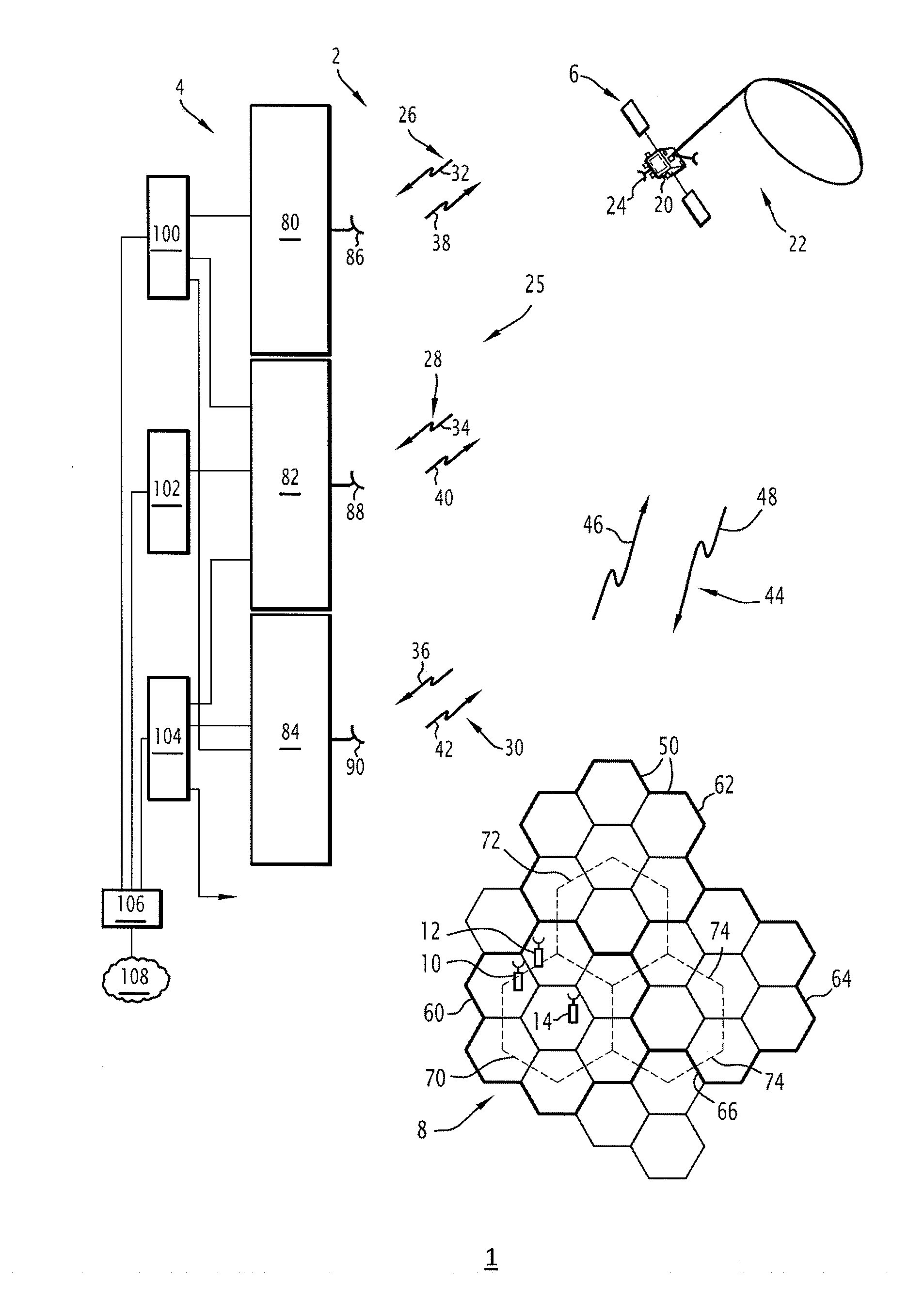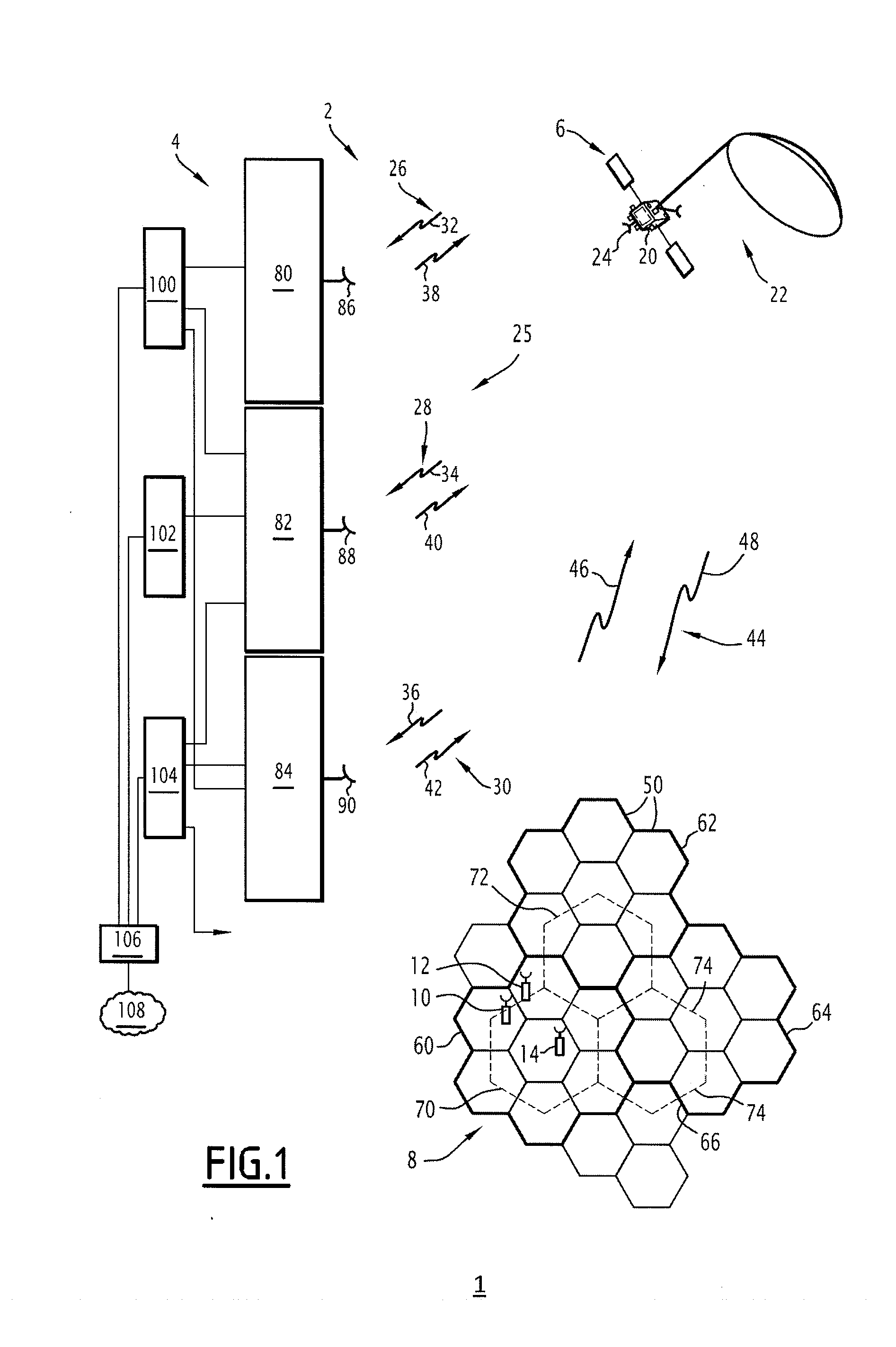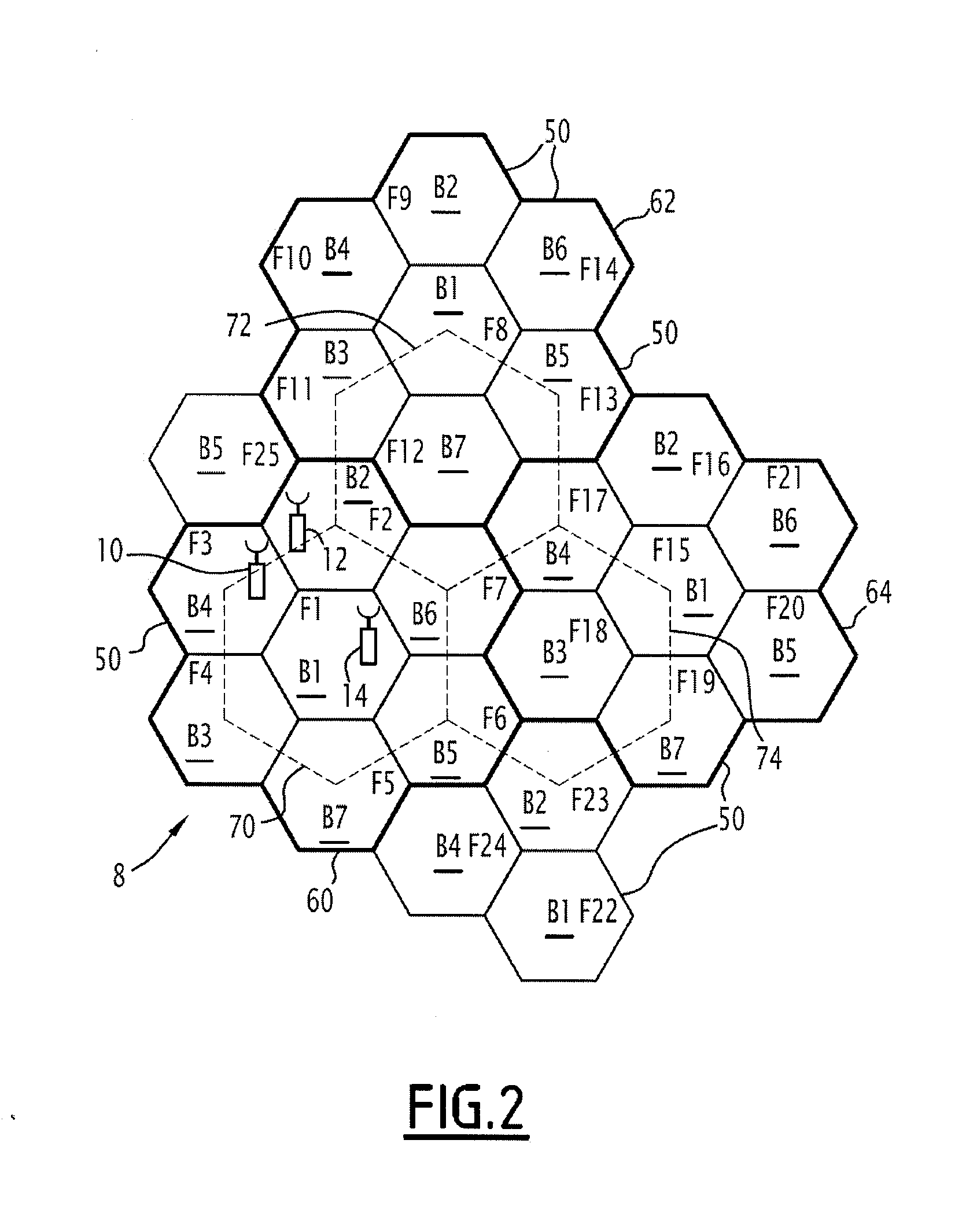System and method for managing multiple transmission resources of a spatial multi-cell radio-communication system
a radio-communication system and multi-cell technology, applied in the direction of radio transmission, electrical equipment, transmission, etc., can solve the problems of difficult to achieve communication with such a direct transposition architecture, and achieve the effect of reducing the size of the cell and being flexible and efficien
- Summary
- Abstract
- Description
- Claims
- Application Information
AI Technical Summary
Benefits of technology
Problems solved by technology
Method used
Image
Examples
second embodiment
[0177]According to FIG. 6, the multi-cell radio communication system is shown, in which each virtual cell exploits all of the frequency bands of a different cluster of beams.
[0178]The three satellite access stations 80, 82, 84 illustrated are identical to those of FIGS. 1 and 3, and the distribution of the frequency bands in the beams of FIG. 1 is identical to that of FIG. 2.
[0179]Three coordinating stations 524, 526, 528, each associated with a different virtual cell are each respectively connected to a different satellite access station 80, 82, 84.
[0180]Here, each virtual cell is combined, in terms of beams, with all of the coverage of the cluster with which it is associated.
[0181]Each frequency band transposition of a same satellite access station is connected to the control station associated with the access station.
[0182]For example, each transposition unit 124, 126, 128, 129, 130, 132, 134 of the first access station 82 is connected to the first control unit 526 through respec...
first embodiment
[0183]It is assumed here, as in the first embodiment, that each band B(k) is subdivided into three sub-bands SB(k, j), j varying from 1 to 3, and each transposition unit comprises three sub-band transposition units not shown in FIG. 6.
[0184]The first virtual cell control unit 526 is configured to manage communications in which the assigned transmission channels use at least two sub-bands as transmission resources, two of them each belonging to a different frequency band.
[0185]For example, the control unit 526 can process the sub-band SB(1, 2) and the sub-band SB(7, 2) assigned to the first cluster as resources for a same transmission channel.
[0186]FIG. 7 illustrates a coverage alternative 600 of beams 602 and frequency band distribution in the beams.
[0187]Here, 25 beams are shown and arranged in five rows of five beams having a square shape.
[0188]Allocated to the beams of the first row at the top of FIG. 7, from left to right, are respectively the frequency bands B3, B1, B4, B2, B5,...
PUM
 Login to View More
Login to View More Abstract
Description
Claims
Application Information
 Login to View More
Login to View More - R&D
- Intellectual Property
- Life Sciences
- Materials
- Tech Scout
- Unparalleled Data Quality
- Higher Quality Content
- 60% Fewer Hallucinations
Browse by: Latest US Patents, China's latest patents, Technical Efficacy Thesaurus, Application Domain, Technology Topic, Popular Technical Reports.
© 2025 PatSnap. All rights reserved.Legal|Privacy policy|Modern Slavery Act Transparency Statement|Sitemap|About US| Contact US: help@patsnap.com



